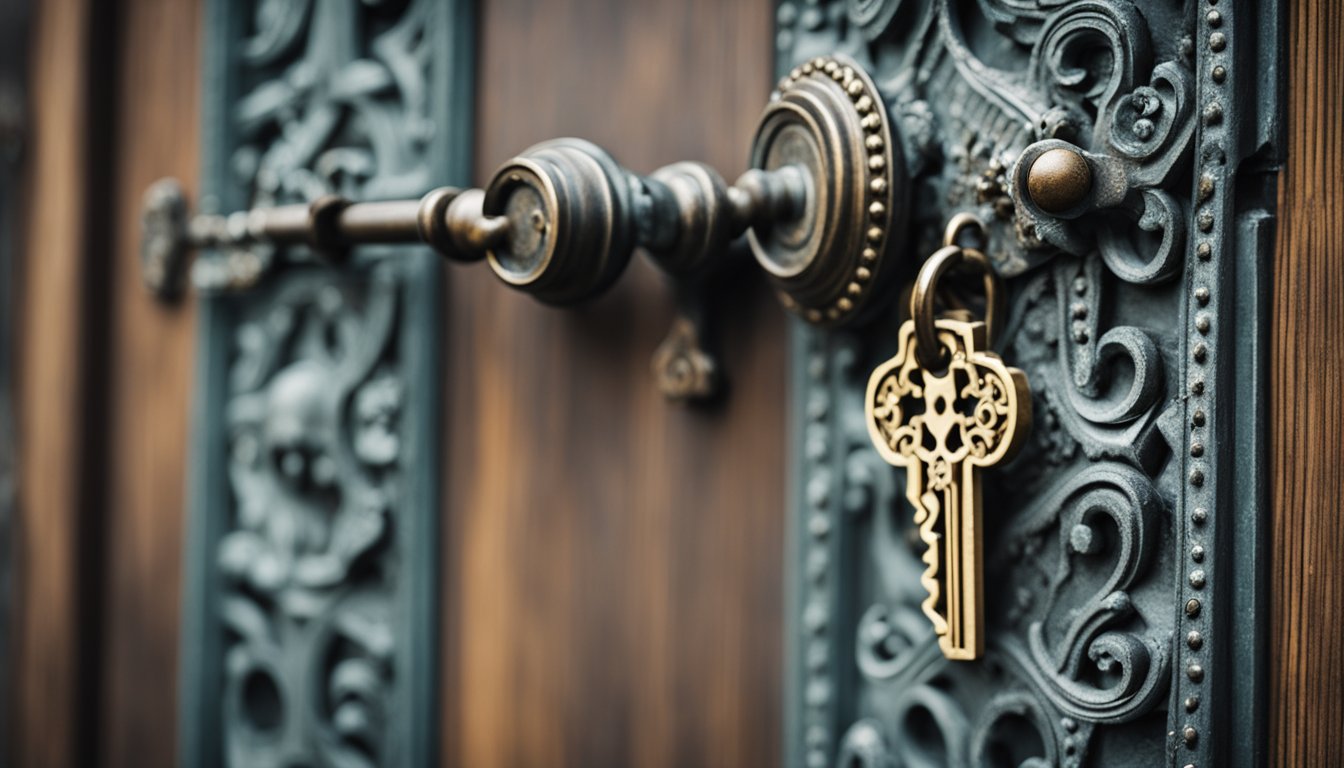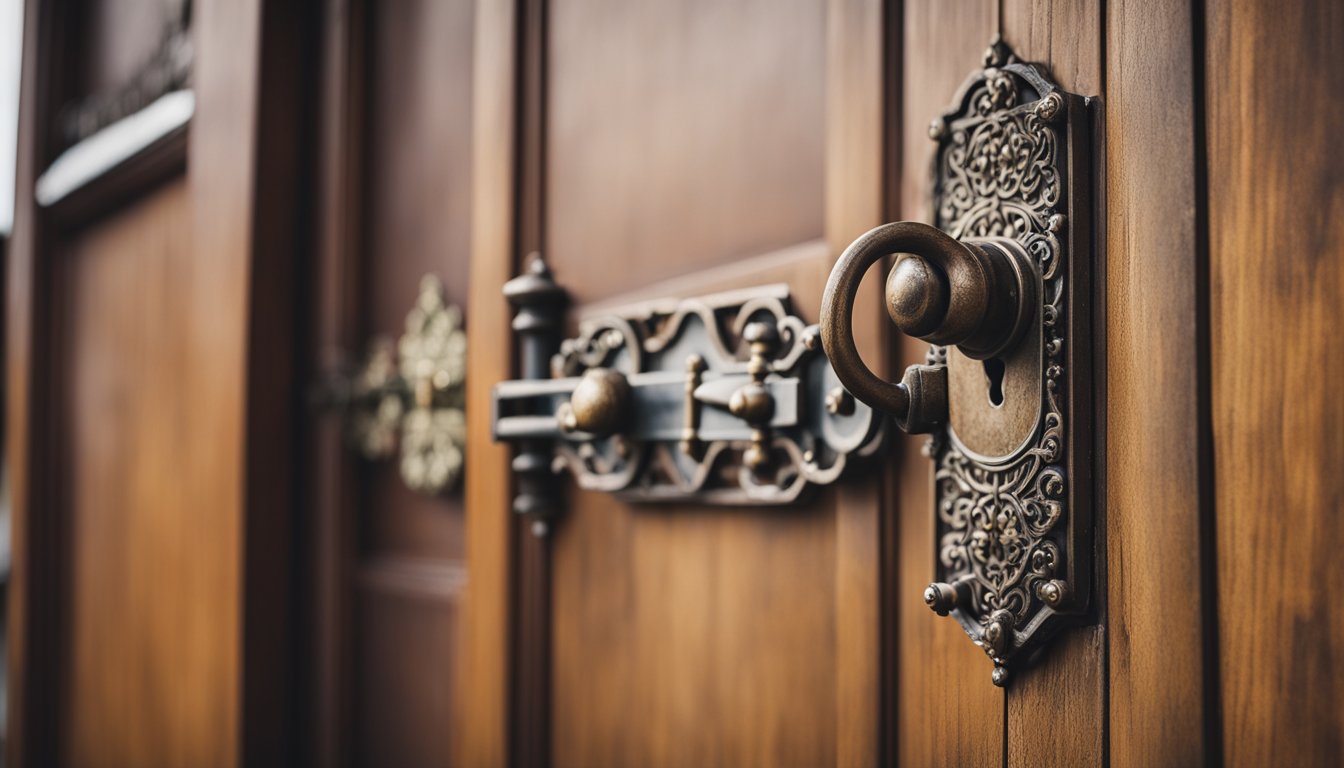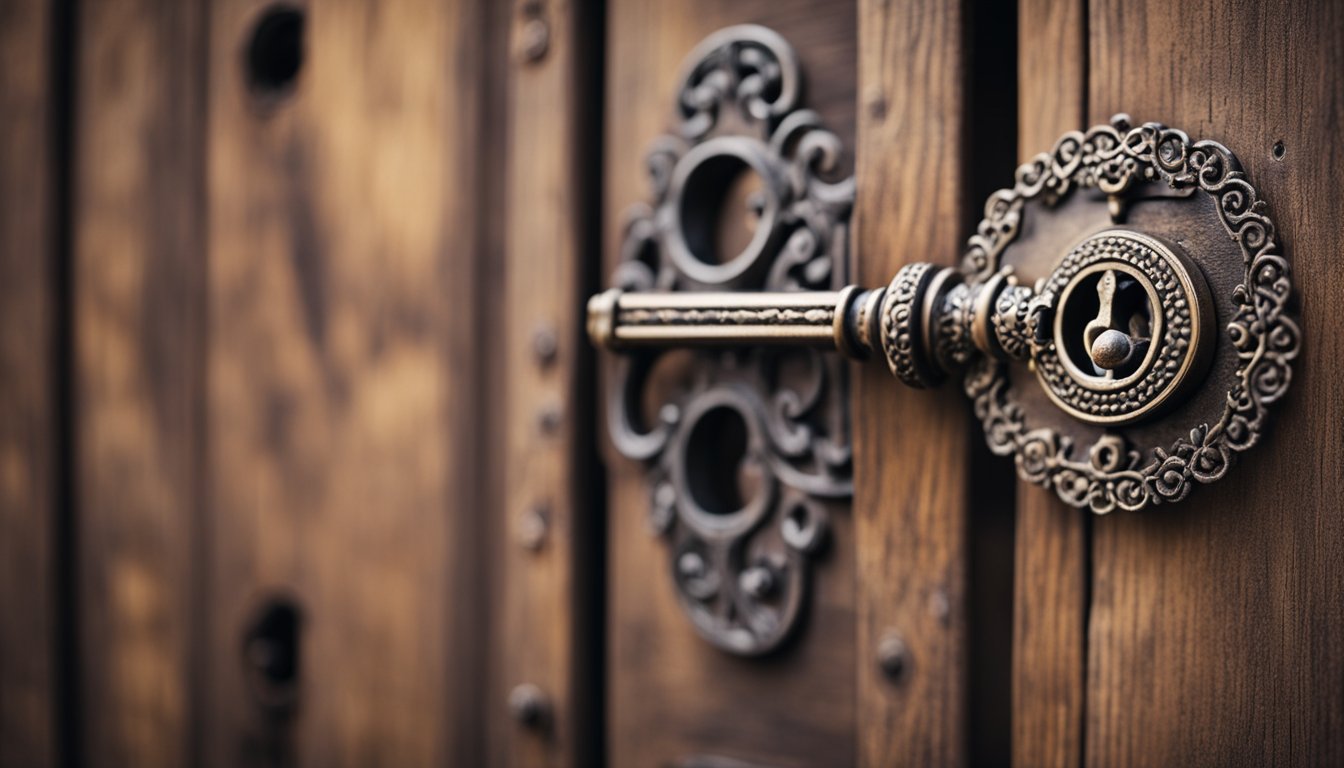Late updated: 22 Apr 2025 12:04
Written by: Elena Prescott
Navigating Locksmith Challenges With Historic UK Locks: Expert Insights into Timeless Security Solutions
Embarking on the journey to navigate historic UK locks presents a unique blend of challenge and fascination. Often found in listed buildings and historic properties, these locks tell stories of eras past and craftsmanship unparalleled. For property owners and locksmiths alike, understanding the intricate mechanisms and historical significance of these locks is crucial to ensuring both security and preservation.

We find that balancing the demands of security with the necessary conservation practices forms the core of our approach. Unique issues such as sourcing replacement keys or restoring ancient lock mechanisms can present notable obstacles. Yet, with skilled craftsmanship and modern ingenuity, we bridge the gap between the past and the present.
Our commitment to managing these historic locks extends beyond mere functionality. The task requires appreciation for the architectural heritage they represent and a dedication to maintaining their original charm while meeting current security needs.
Key Takeaways
- Historic locks require specialised solutions for preservation and security.
- Balancing security and conservation is crucial for historic properties.
- Expertise in locksmithing helps maintain architectural integrity.
Historic UK Locks: Common Challenges and Locksmith Solutions

Navigating the intricacies of historic UK locks presents unique challenges, especially in terms of maintaining both functionality and preservation. Understanding typical issues related to ageing lock mechanisms, selecting the right professional locksmith for specialised tasks, and deciding between lock repair and replacement are crucial for those managing heritage properties.
Typical Issues With Ageing Lock Mechanisms
One of the most common problems with historic UK locks is the ageing of internal mechanisms, which can lead to reduced functionality. Locks from earlier centuries often suffered from metal fatigue or corrosion due to high moisture levels. Over time, these factors compromise the integrity of the lock, making doors difficult to secure or open.
Wear and tear is another prevalent issue. Historic locks may see their parts degrade from constant use over decades, or even centuries. These worn components can seize up, causing the locks to jam or altogether fail. A professional locksmith, with experience in heritage locks, can examine these ageing mechanisms to diagnose the root of the problem accurately.
Choosing the Right Professional Locksmith
When dealing with historic locks, it's vital to select a locksmith who specialises in traditional mechanisms. Experience with vintage lock repair is key, as these professionals need to understand both the historical context and unique engineering challenges presented. Certification can be a valuable marker of expertise.
While cost is a consideration, the priority should always be on finding a locksmith capable of preserving the lock's historical value while ensuring modern security standards. We recommend researching locksmiths with a portfolio of past work on similar historical projects or seeking referrals from heritage property owners to find trusted professionals.
Lock Repair Versus Replacement in Heritage Settings
The decision to repair or replace historic locks requires careful consideration. Repairing aged locks often aligns with preservation goals, retaining the original mechanism and aesthetics. This process can involve replacing parts or custom-fabrication to maintain authenticity, which skilled locksmiths are adept at handling.
In contrast, if a lock poses significant security concerns or cannot be restored to a functional state, replacement might be unavoidable. When replacement becomes necessary, options exist for modern replicas that match the style and design of the original. These replicas ensure security while retaining the heritage appeal, balancing preservation with practical needs.
Access Management and Security Practices for Historic Properties

Managing access and ensuring security in historic properties present unique challenges. These challenges require a balance between maintaining original features and implementing effective security measures. The following sections explore handling lost keys, special considerations for door locks, and finding the right balance between security and conservation.
Lost Keys and Rekeying Historic Locks
Lost keys to historic locks are not just an inconvenience; they pose significant security threats. Often, these locks and their matching keys are irreplaceable. Key duplication, particularly with intricate and aged designs, can be challenging. Engaging a specialist locksmith familiar with antique locks is crucial for resolving these issues.
Rekeying is often the preferred alternative when replacing historic locks is not an option. This process involves adjusting the inner workings of the lock to function with a new key, thereby preserving external historic features. Professional lock servicing is essential to maintain the lock’s integrity while updating security measures.
Special Considerations for Door Locks and Hardware
When working with historic door locks, maintaining authenticity is a priority. Original materials and designs must be preserved where possible. This requires us to find hardware and locks that fit historical standards while still offering modern security advantages. Options include retrofitting existing knob locks with updated mechanisms without altering their exterior appearance.
Attention to detail in servicing and restoring these locks ensures they continue to provide adequate protection. Ensuring the hardware fits with the architectural style is also important. Regular lock servicing helps prevent break-in attempts by ensuring the locks remain functional and secure over time.
Balancing Peace of Mind With Conservation
Achieving peace of mind while preserving the character of historic properties is often a balancing act. The integrity of the property must be maintained without compromising on modern access control systems. This involves carefully selecting lock services and technology that respect the heritage and aesthetic of the building.
Sensitive security solutions like discrete alarm systems and restoration-friendly lock enhancements can be employed. Our approach should always lean towards conservation alongside the integration of necessary protective measures to mitigate risks such as unauthorised access or theft. This ensures security without detracting from the historical and cultural value of these properties.
Frequently Asked Questions

Navigating the complexities of historic UK locks requires a blend of specialised knowledge and careful handling. Addressing common challenges, restoration methods, legal considerations, required tools, sourcing parts, and necessary qualifications form the core of our approach to these unique security systems.
What are the common issues faced when working with historic locks in the UK?
Working with historic locks often involves dealing with wear and tear, rust, and outdated mechanisms. These locks may also lack standardisation, making repairs and adjustments more intricate. Since many are unique or custom-made, incorrect handling can easily damage delicate components.
How does one approach the restoration of antique UK locking mechanisms?
Restoration begins with a thorough assessment to understand the lock's condition and history. Cleaning is crucial to removing rust and debris. We recommend using gentle techniques to avoid causing further damage. Sometimes, custom-fabricated parts might be necessary to replace missing or broken components.
What are the legal considerations when altering or replacing locks on listed buildings?
Listed buildings have specific restrictions under UK law to preserve their historical integrity. Any alterations or replacements must comply with heritage guidelines. It is crucial to obtain necessary permissions from local authorities before proceeding. This ensures we maintain the building’s historic value while updating security.
Which specialised tools are required for servicing vintage British lock systems?
Antique locks often require bespoke tools tailored to their unique designs. Tools like skeleton keys, custom-made picks, and special lubricants are essential. Precision is key - our tools must be of the right size and material to avoid damaging antique components during servicing.
How can one identify and source replacement parts for discontinued lock models in the UK?
Sourcing parts for discontinued locks involves thorough research and networking with antique hardware suppliers and specialists. Part identification starts with studying the lock's maker marks and design features. We often rely on specialist dealers who have extensive catalogues and might be able to provide original parts or reproductions.
What training or qualifications are necessary to work on historic locks and security systems?
Professionals working on historic locks should pursue certifications from recognised locksmith associations in the UK. Apprenticeships or specialised courses focusing on historical contexts are invaluable. Such qualifications ensure that we have the expertise required to handle and preserve ancient locking mechanisms with accuracy and care.
